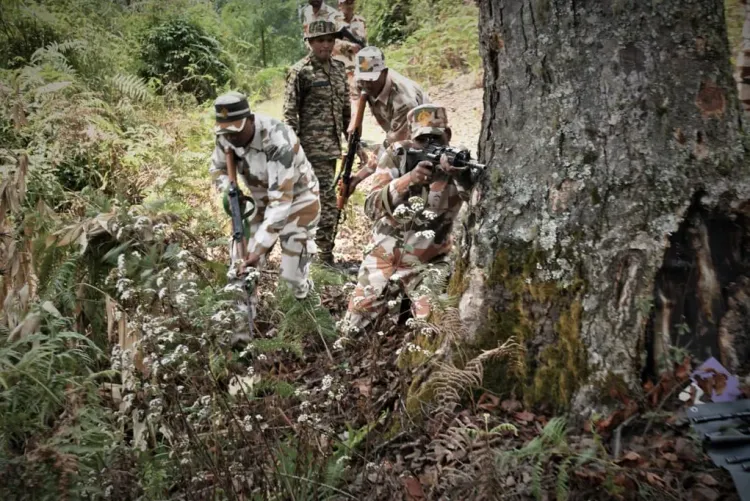How can India effectively counter grey zone warfare from Pakistan and China?

Synopsis
Key Takeaways
- Grey zone warfare poses significant security challenges for India.
- China employs territorial expansion and cyber warfare tactics.
- Pakistan relies on ideological warfare and proxy conflicts.
- Cooperation between Pakistan and China complicates the situation.
- India must adapt its strategies to counter these threats effectively.
New Delhi, Aug 3 (NationPress) In the future, grey zone warfare will remain a critical factor in the security challenges faced by India, particularly from China and Pakistan. Both nations prefer this type of warfare as it operates below the threshold of overt conflict. Messages are conveyed, and national goals are achieved without the need for a full-scale war. Additionally, such tactics allow these countries to maintain a level of deniability.
In terms of strategy, China has adopted a calculated approach, primarily focusing on territorial expansion. Conversely, Pakistan has leaned toward ideological warfare and fostering instability within India.
China employs a salami-slicing strategy, incrementally expanding its control over disputed territories without provoking immediate military responses. Another tactic includes creating significant economic dependence through trade, loans, and investments to extend its influence.
However, one of the most pressing threats is cyber and information warfare.
To weaken its adversaries, China has launched cyberattacks on Indian defense and infrastructure systems, alongside disseminating misinformation to sway public perception.
Additionally, China has utilized militia groups instead of conventional military forces, particularly in contested areas. It also financially supports political parties, media outlets, and academic institutions to craft a narrative against India, ultimately aiming to diminish India’s influence while keeping the nation preoccupied at its borders.
Pakistan, on the other hand, has focused on ideological, proxy warfare and the Kashmir issue. With terrorism as a state policy, it is willing to jeopardize its own stability to undermine India. For years, Pakistan has propagated extremist ideologies and fueled separatist movements within India. The radicalization of Kashmiri youth through social media propaganda has been a notable tactic, along with attempts to damage India’s global reputation through persistent cyber-attacks and misinformation. A prime example includes efforts to discredit India’s actions in Kashmir and Punjab.
Pakistan has continuously used the threat of escalation between these nuclear states as a deterrent against India. Nevertheless, Operation Sindoor has challenged that narrative. The nuclear doctrine has often facilitated low-intensity conflicts, as Pakistan fears that large-scale retaliation is beyond its capacity.
Cross-border terrorism and infiltration have been employed under the assumption that India will refrain from escalating responses.
Another concern for India is the growing coordination between Pakistan and China, despite their differing grey zone strategies. Pakistan benefits from China’s diplomatic and military support.
Moreover, China’s investments in the China-Pakistan Economic Corridor have bolstered Pakistan’s capabilities to execute grey zone tactics against India.
India’s national security strategists believe a shift in strategy is imperative to counter such warfare. Strengthening cyber defenses and intelligence networks is crucial to combat misinformation campaigns.
The nation’s religious and ethnic diversity poses challenges, as a multi-ethnic society is particularly susceptible to external manipulations.
Addressing radicalization attempts and enhancing internal stability are also vital.
Operation Sindoor marks a pivotal moment concerning Pakistan, as India has embraced a new and assertive military strategy.









